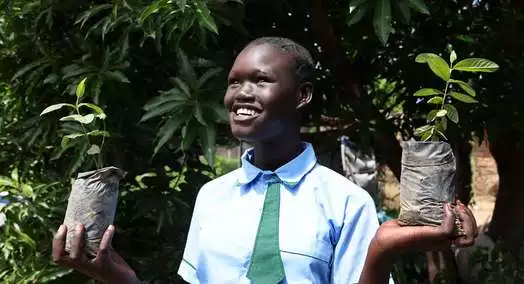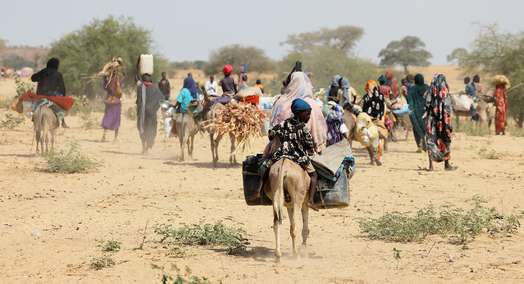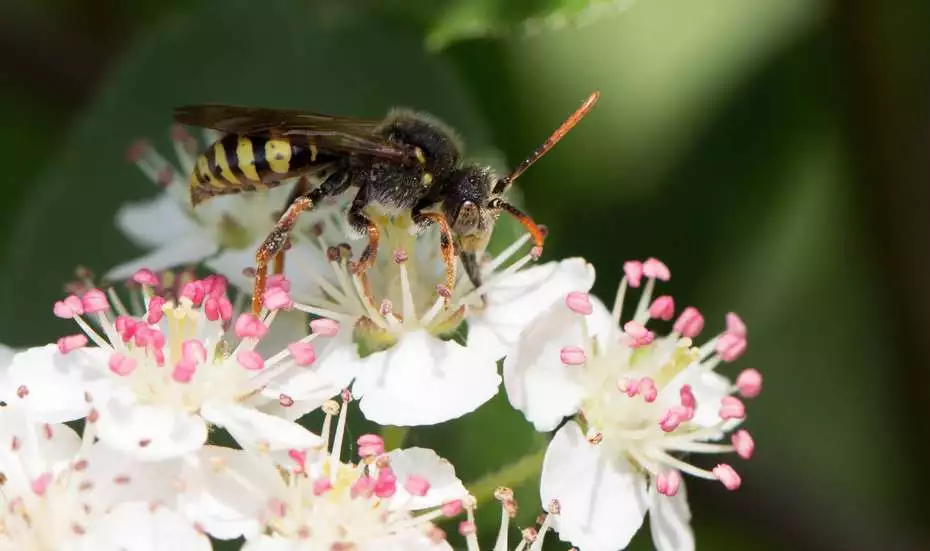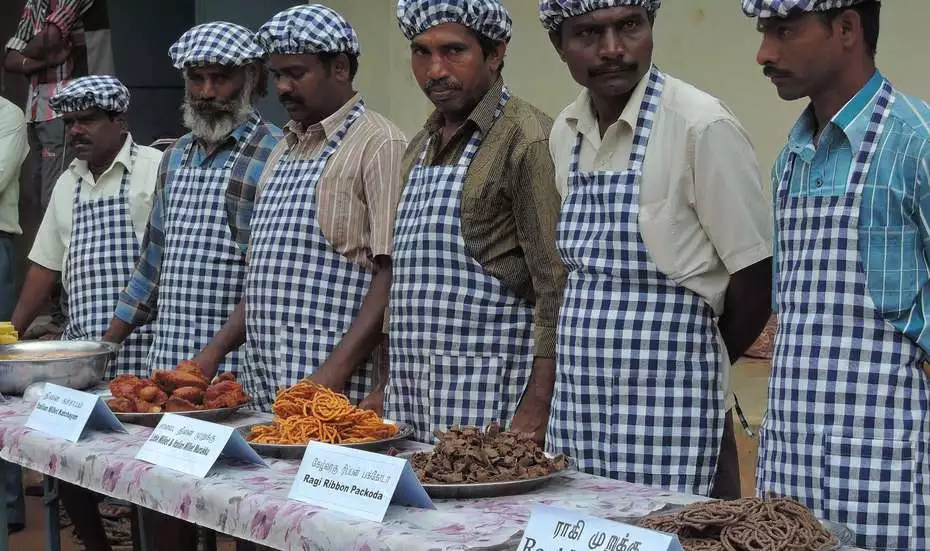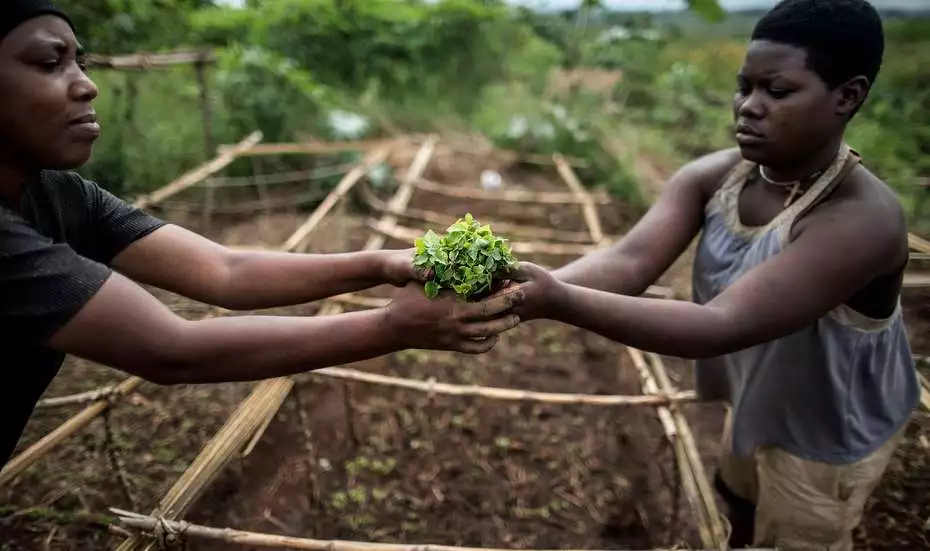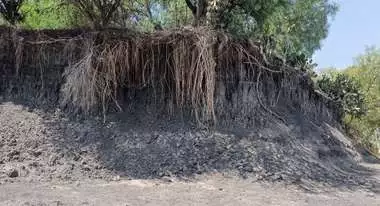Declining biodiversity threatens food security
The scale and breathtaking pace of biodiversity loss make agriculture more vulnerable to climate change, pests and diseases. Nutrition is becoming more and more unbalanced.
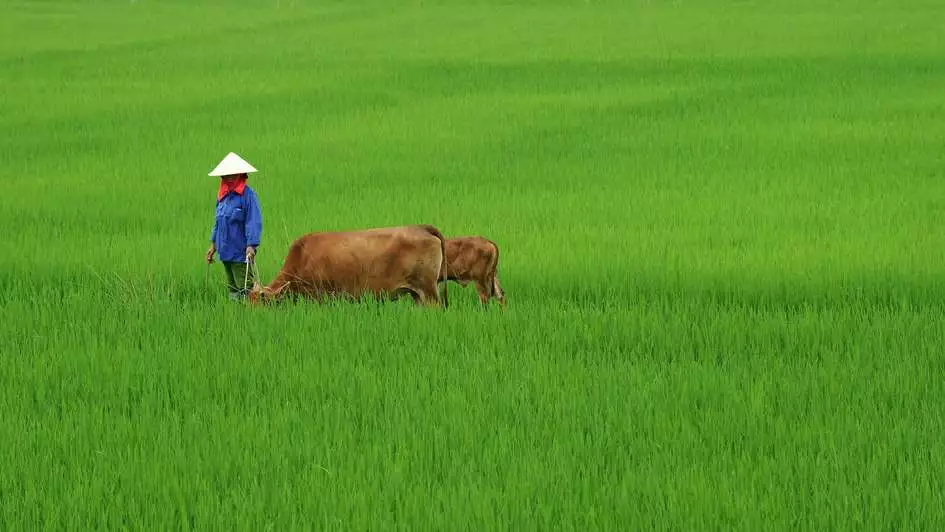
Globally, biodiversity for food and agriculture is in decline. This poses a serious risk to global food security and makes agriculture less resilient to climate change, pests and diseases. We need more sustainable food production systems to better conserve and sustainably use biodiversity. New challenges like the digitalisation of genetic information must be addressed.
The loss of biodiversity is accelerating around the world and ecosystem services are deteriorating. It is estimated that due to human-induced environmental changes and based on current trends, one million animal and plant species are threatened with extinction (IPBES, 2019).
The rate in loss of biodiversity is alarming and concerns the entire humanity. Humans are dependent on biodiversity and ecosystem services it provides to meet their basic food needs. Yet while crop and livestock agriculture, forestry, fisheries and aquaculture are made up of and rely on a complex web of living organisms, they have become one of the major drivers of biodiversity loss.
Agrobiodiversity
Biodiversity for food and agriculture includes the domesticated plants and animals raised in crop, livestock, forest and aquaculture systems, harvested forest and aquatic species, the wild relatives of domesticated species, other wild species harvested for food and other products. Furthermore, it also entails “associated biodiversity” which makes up the vast range of organisms that live in and around food production systems sustaining them and contributing to their output (FAO, 2019).
Biodiversity for food and agriculture is disappearing by the day
The State of the World’s Biodiversity for Food and Agriculture, published by the Food and Agriculture Organization of the United Nations (FAO), highlights the erosion of the diversity of the plants, animals and micro-organisms that sustain food production systems (FAO, 2019). Once lost, biodiversity for food and agriculture cannot be recovered.
Worldwide, farmers’ varieties and landraces are disappearing at an unprecedented speed. Consequently, global diets are becoming increasingly homogenous, a trend that risks undermining diverse and nutrient-rich diets which are essential for human health.
The statistics are alarming: out of the 6,000 different plant species used as food, only nine (sugarcane, wheat, rice, maize, potatoes, sugar beet, cassava, oil palm and soybean) contribute 66% of total crop production. Livestock production is concentrated mainly on eight species (pig, chicken, cattle, sheep, goat, turkey, duck and buffalo) accounting for 97% of global meat production.
Valuable wild relatives of domesticated animals and crops in natural ecosystems are dwindling too. Close to 20% of the wild species recorded in The International Union for Conservation of Nature Red List of Threatened Species (IUCN 2021) as sources of human food are classed as threatened. Almost a third of ocean fish stocks are overfished and a third of freshwater species are threatened.
In addition, some of the less visible species which do not end on our plate are in decline, such as pollinators and other invertebrates and micro-organisms (such as insects, bats, birds, mangroves, corals, seagrasses, earthworms, soil-dwelling fungi and bacteria). They keep soils fertile, pollinate plants, purify water and air, keep fish and trees healthy, and fight crop and livestock pests and diseases.
Without them agriculture would be impossible. Yet, their importance in food production systems has not yet been studied in detail and their potentials are unexplored. We are losing biodiversity not knowing exactly what we are losing.
There is therefore an urgent need to improve our knowledge on ecosystems for food and agriculture, and in particular, to study the role of associated biodiversity. This will help us to better understand, conserve and manage the diversity that underpins our food systems. The motto must be to work with biodiversity and not against it.
Farming sustainably to fight the erosion of biodiversity
Population growth, climate change, urbanisation and trends in global markets and trade are the main indirect driving forces putting pressure on biodiversity. Changes in land use and water management, intensification of production systems, deforestation, overfishing, excessive use of pesticides and fertilisers, pollution and ecosystem degradation are some of the major direct threats to biodiversity for food and agriculture.
Fighting the erosion of biodiversity for food and agriculture requires its more sustainable management, use and conservation. This implies a shift to more biodiversity friendly production methods, favouring a greater diversity of crop and livestock species, maintaining well connected habitats for pollinators and natural enemies of pests, practising sustainable soil management and reducing the use of pesticides and fertilisers.
Farmers, livestock keepers, forest dwellers and fisherfolk are managers and custodians of biodiversity. Smallholders of less than 2 hectares make up about 84% of all farms worldwide but manage only 12% of all agricultural land (Lowder et al. 2021). On average, they have higher yields and harbour greater biodiversity than larger farms (Ricciardi et al. 2021).
Agriculture practices based on local knowledge are essential in providing solutions that promote more sustainable food production systems. Agriculture producers, scientists and other stakeholders need to work more closely together to develop management practices and new technologies that have positive effects on biodiversity and the supply of ecosystem services. There is no one-size-fits all solution, relevant approaches range from agroecology to precision farming.
All have a role to play
The transition towards a biodiversity-friendly food system requires the political will and joint commitment of all stakeholders, including policy-makers, farmers, food companies and consumers. They all have a role to play. Agriculture producers need training and support, and an enabling policy environment encouraging and rewarding sustainable production practices to protect biodiversity, enhance the landscape, and improve the quality of water, air and soil.
Incentives, like subsidies, that run counter to this transformation, need to be phased out as soon as possible. As consumers, we can choose food from biodiversity-friendly systems, such as organic agriculture or sustainable fisheries and buy products of local crop varieties and livestock breeds. In backyards and gardens, we can help to rebuild insect populations and plant flowers attracting native bee species.
But the conservation of biodiversity in farms and in the wild is not sufficient. As an additional insurance, samples need to be stored in gene- and local seed banks to safeguard the diversity of plant and animal genetic resources for future research and breeding.
Digitalisation of genetic information should benefit countries of origin
With the introduction of modern biotechnologies, genetic resources will increasingly be sequenced and then stored in data banks. With new biotechnological methods it is possible to modify genetic material and create new organisms without having physical material at hand.
All that is needed is digital sequence information that is freely available in online databases. While the digitalisation of genetic information offers amazing opportunities, it also raises new and very complex ethical and legal questions. Countries of origin of genetic resources expect that the benefits arising from research and development on their genetic resources are shared with them.
In 2010, governments adopted the Nagoya Protocol, a legal framework that facilitates access to and the sharing of benefits derived from genetic resources. With the digitalisation of genetic information and its accessibility through data bases, many countries fear that the Nagoya Protocol could be undermined and benefits will no longer be shared.
Biodiversity for food and agriculture is vital for food security
The erosion of biodiversity will undermine the capacity of agricultural systems to adapt to changing conditions and shocks, such as climate change, and outbreaks of pests and diseases that may jeopardise food security and livelihoods. For example, in 1970, the Southern Corn Leaf Blight, a fungal disease, destroyed about 15% of the maize crop in the United States, at an estimated loss of one billion dollars (Bruns, 2017).
To prevent such devastating harvest failures and to cope with the possible emergence of new pathogens, it is paramount to incorporate a more varied range of genetic diversity into our production systems. Especially in the context of climate change, it is imperative to use genetic diversity to adapt plant varieties and animals breeds to a changing climate.
Countries in the Global South vulnerable to climate change might need additional support in creating long-term sustainable and resilient agricultural systems capable of feeding growing populations. In many countries, farmers and researchers are already working together to explore which tree provenances, crop varieties and animal breeds, and which combinations of them, fit best to local conditions and are most resilient against stressors (FAO, 2021).
Countries need to do more to better recognise and value biodiversity
FAO’s Commission on Genetic Resources for Food and Agriculture is the only permanent intergovernmental body that specifically addresses biological diversity for food and agriculture. It provides a policy negotiation platform for its members (178 countries and the European Union) to sustainably use and conserve genetic resources for food and agriculture and to equitably share their benefits.
The Commission has adopted technical guidelines and policies, such as global plans of action on plant, animal and forest genetic resources helping countries formulate their own policies. In addition to developing a global plan of action on aquatic genetic resources, the Commission is currently working on a policy response to the State of the World on Biodiversity for Food and Agriculture (FAO, 2019).
Though voluntary, such action plans have national impact; for example, more than 40% of reporting countries indicate that they have completed the preparation of a national strategy and action plan for animal genetic resources, and another 20% of countries are preparing such strategies and plans.
Despite this progress, the sustainable management of genetic resources needs to be further improved. There is a need to strengthen collaboration among policy-makers, producer organisations, consumers, the private sector and civil-society organisations across food and agriculture and environment sectors.
We need a better recognition and valuation of the role of biodiversity for food and agriculture, because it enhances food security, livelihoods, health and the environment. Countries need to apply more decisive actions for its conservation and sustainable use if they want to achieve Zero Hunger and the Sustainable Development Goals.
The views expressed in this article are those of the author and do not necessarily reflect the views or policies of the Food and Agriculture Organization of the United Nations.
References:
Bruns, A. (2017). Southern Corn Leaf Blight: A Story Worth Retelling. Agronomy Journal 109:1–7, doi:10.2134/agronj2017.01.0006
FAO (2019). The State of the World’s Biodiversity for Food and Agriculture, J. Bélanger & D. Pilling (eds.). FAO Commission on Genetic Resources for Food and Agriculture Assessments. Rome. http://www.fao.org/documents/card/en/c/ca3129en/
FAO (2021). The role of genetic resources for food and agriculture in climate change adaptation and mitigation. CGRFA/WG-FGR-6/21/Inf.6. http://www.fao.org/3/cb3888en/cb3888en.pdf
IUCN (2021). The International Union for Conservation of Nature Red List of Threatened Species https://www.iucnredlist.org/
IPBES (2019). Summary for policymakers of the global assessment report on biodiversity and ecosystem services of the Intergovernmental Science-Policy Platform on Biodiversity and Ecosystem Services. https://www.ipbes.net/global-assessment
Pilling, D., Bélanger, J., Diulgheroff , S., Koskela, J., Leroy, G., Mair, G. and Hoffmann, I. (2020) “Global status of genetic resources for food and agriculture: challenges and research needs : Global status of genetic resources for food and agriculture”, Genetic Resources, 1(1), pp. 4-16. doi: 10.46265/genresj.2020.1.4-16. https://doi.org/10.46265/genresj.2020.1.4-16
Lowder S.K., Sánchez M.V., Bertini R. (2021). Which farms feed the world and has farmland become more concentrated?, World Development (142), https://doi.org/10.1016/j.worlddev.2021.105455
Ricciardi, V., Mehrabi, Z., Wittman, H., James, D., Ramankutty, N. (2021) Higher yields and more biodiversity on smaller farms. Nature Sustainability . https://doi.org/10.1038/s41893-021-00699-2

